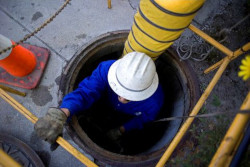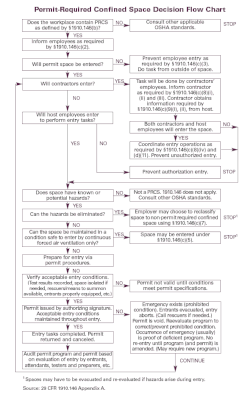Confined Space Safety Basics
Part of the HAZWOPER site-specific safety and health plan detailed in 29 CFR 1910.120 (b)(4) addresses confined space entry procedures.
In many instances, employees who work in confined spaces also face increased risk of exposure to serious physical injury from hazards such as entrapment, engulfment, and hazardous atmospheric conditions.
By an effective confined space entry program, you will be better able to:
- recognize, evaluate, and control confined space hazards;
- save lives and protect employees from job-related injuries and illnesses;
- promote safe and effective work practices;
- reduce preventable workers' compensation costs; and
- comply with company procedures and practices.
What is a Confined Space?
Per OSHA standards, a confined space is defined by OSHA as a space that meets the following three criteria:
- The space is large enough and configured such that an employee can bodily enter and perform work;
- The space has limited means of entry (access) and exit (egress), which means you need to use your hands or contort your body to enter the space; and
- The space is not designed for continuous employee occupancy.
Permit-Required Confined Spaces (PRCS)
A permit-required confined space is a space that meets the 3 criteria for a confined space and has one or more of the following 4 characteristics:
- It contains or has the potential to contain a hazardous atmosphere;
- It contains a material with the potential to engulf someone who enters the space;
- It has an internal configuration that might cause an entrant to be trapped or asphyxiated by inwardly converging walls or by a floor that slopes downward and tapers to a smaller cross section; or
- It contains any other recognized serious safety or health hazards.
See the Confined Space Entry Decision Flow Chart on the right to help you determine if your confined spaces need a permit.
Knowledge Check Choose the best answer for the question.
1-1. Which of these is a criterion used by OSHA to define a confined space?
You forgot to answer the question!


